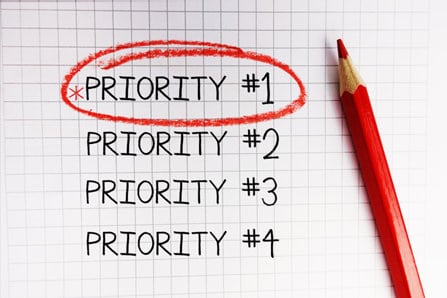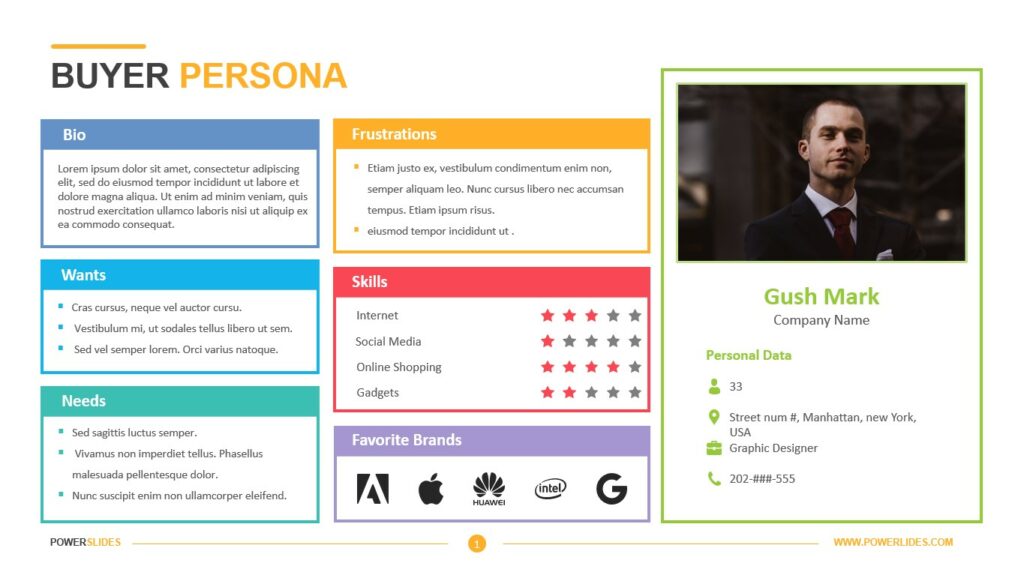Creating Buyer Personas for the Digital Marketing Plan
Whether you’re putting together your first draft of the DMP or you’ve just landed your dream job in the digital marketing world, you’ve probably noticed that understanding your company’s customers is arguably the most important factor to success. However, taking on this responsibility can be quite daunting. It’s hard to figure out where to start and when to stop. A great first step – and one that is commonly used in the business world – is to draft buyer personas.

Buyer personas are semi-fictional characters that represent your ideal target market based on qualitative and quantitative research. Drafting these personas will pinpoint prospects, align product/service development and act as a foundation to your DMP.
As a digital marketing minor student who has just submitted the final DMP, I wanted to reiterate to all future students how important and useful the research gathered for the buyer personas proved to be. The insightful information became extremely important for justifying various decisions, strategies and tactics across the SEO plan, SMM plan and website redesign.
Extensive customer research was not only strongly advised by my lecturers, it was also a common theme throughout the guest lectures (bi-weekly sessions hosted by successful professionals with a background in digital marketing). Justyna Ciecierska, a growth marketer and a recent guest speaker during the minor, revealed during her lecture, that the best kept secret in marketing is talking to the customer. It might sound simple or a bit obvious, but sometimes we can get caught up in the analytics and numbers, while one of the most insightful and humane forms of customer research is right under our nose.
If you have read this far into the blog, it looks like I have convinced you on how important this topic is. Now it’s time to finally elaborate on HOW to collect buyer persona research. From the lectures during the semester and from various online resources, I have summarised the approach you should take for your DMP.
Step 1: Quantitative Analysis
Collect a list of the company’s website users. Analyse the list at the organisation level and then analyse the list at the individual level.
– Organisational Level: This would be a great opportunity to contact the company and request access to or data from their database such as Google Analytics or any other ERP system.
-Individual level: Great tools at your disposal; MixPanel, Amplitude and Indicative. Utilising these tools will help you gather vital web and behavioural analytics so you can draw conclusions and set primitive objectives i.e. which ‘type of person’ do you want to target and why.
In a meeting with your team and company representative, make a persona list of priority. Making a priority list will isolate which personas are the most or least important for the company at the time. This will help you plan what value you want to create for personas and ultimately begin the formulation of the strategy.

Step 2: Qualitative Analysis
For this step, you will need to interview existing customers and prospects of the company. Firstly, ask demographic-based questions through a video call or in person. Next, gather information about them and their experience with the product/service:
- why are they seeking the product/service?
- the benefits they receive from the product/service.
- why they (would) chose this company compared to other competitors?
- fears, frustrations and hopes surrounding the product/service.
- what the product/service is fulfilling?
- their triggers when seeking the product/service.
- how were they fulfilling these needs before the product/service?
The follow-up question to pretty much every question in the above list should be “why?” Through these interviews, you’re trying to understand your customers’ and prospects’ goals, behaviours, and motivators. However, people aren’t always great at reflecting on their behaviours, especially in an interview scenario. Remember to create a comfortable environment, but don’t be afraid to ask “why”, even if you end up sounding like a broken record! If you’re still stuck for inspiration for the interviews, look to empathy maps or do some competitive and social listening to see what your personas are doing online.
Lastly, go through the company’s website together. This will greatly aid you in improving the user experience which is important in the second part of the DMP, especially the website redesign. If you’re interviewing someone online, ask them to share their screen. If the interview is in person, request permission to film this section of the interview. The Intechnic Blog suggests you to ask questions regarding the:
- Pains, gains, pain relievers and gain creators; what motivates the user to look for a solution?
- Research methods, findings, and frustrations; how does the user go about gathering all information necessary to start weighing options? What troubles do they encounter?
- Selection criteria; how do they go about making the decision?
- Decision process and outcome; what decision was made and how does the user feel about the process and the outcome?
- Alas, don’t forget the why? why? why? question.
Useful Tools:
- To test and see if your users are staying on your website, try the UsabilityHub tool. This is very important knowledge that will help you understand the User Experience.
- To A/B test, record and visualise your data, use heat mapping tools on HotJar, CrazyEgg, LuckyOrange or FullStory.
- Read the Neil Patel blog on the latest eye-tracking studies.
- For keyword research, visit the SparkToro website.
Step 3: Visualising the Personas
Depending on the interview length, your data could potentially be quite extensive so, as well as having a long document will all your findings, it’s important to visualise and summarise the data. Use websites like Canva to creatively present your data to ensure anyone reading your DMP has fully grasped the research. Hubspot and Uxpressia offer great buyer persona templates.

And that’s it, you’re officially a persona professional, congratulations! If you have any questions, queries or elements that you think should be in this blog, ask a faculty member from the minor – they’re very helpful coaches!